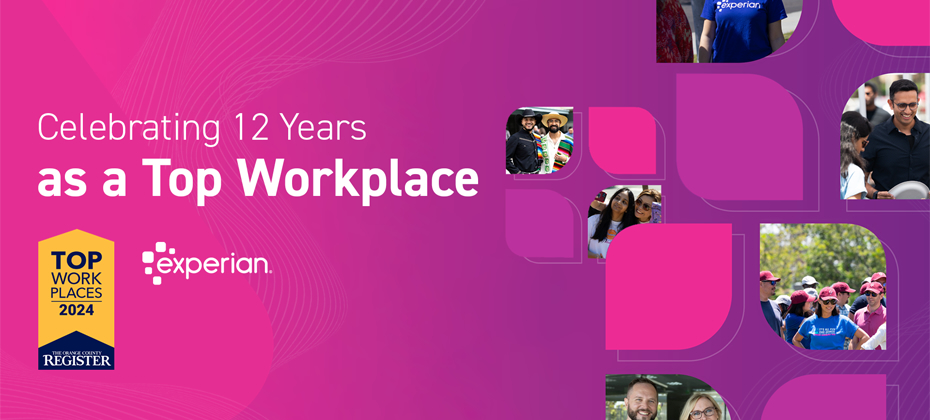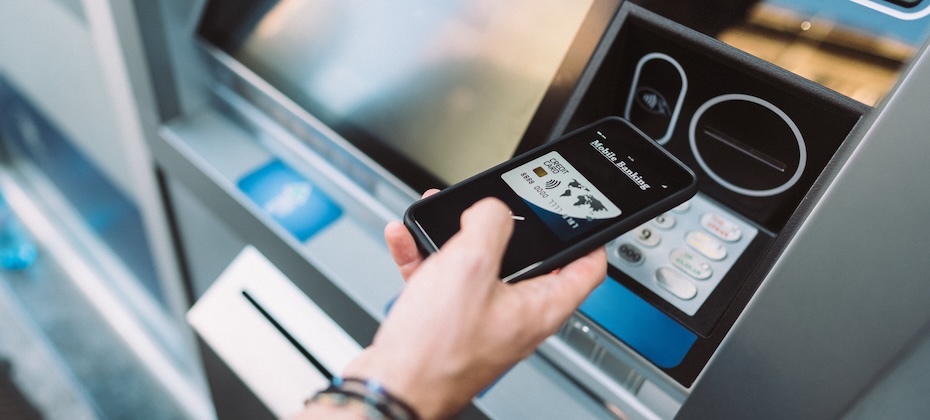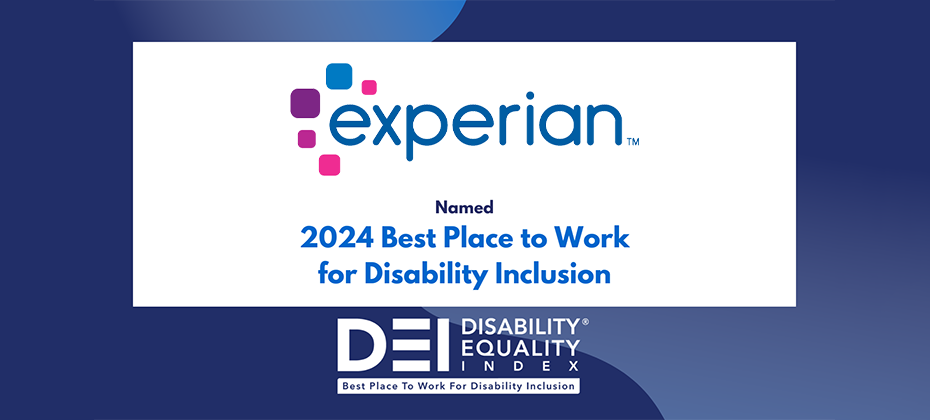At A Glance
At a Glance When an unknown printer took a galley of type and scrambled it to make a type 2ince the 1500s, when an unknown printer took a galley of type and scrambled it to make a type specimen book. It has survived not only five centuries, but also the leap into electronic typesetting, remaining essentially unchanged. It was popularised in the 1960s with the release ince the 1500s, when an unknown printer took a galley of type and scrambled it to make a type specimen book. It has survived not only five centuries, but also the leap into electronic typesetting, remaining essentially unchanged. It was popularised in the 1960s with the releaseince the 1500s, when an unknown printer took a galley of type and scrambled it to make a type specimen book. It has survived not only five centuries, but also the leap into electronic typesetting, remaining essentially unchanged. It was popularised in the 1960s with the releaseince the 1500s, when an unknown printer took a galley of type and scrambled it to make a type specimen book. It has survived not only five centuries, but also the leap into electronic typesetting, remaining essentially unchanged. It was popularised in the 1960s with the releaseince the 1500s, when an unknown printer took a galley of type and scrambled it to make a type specimen book. It has survived not only five centuries, but also the leap into electronic typesetting, remaining essentially unchanged. It was popularised in the 1960s with the release

Through Experian’s long-standing partnership with the UCI Paul Merage School of Business, I had the pleasure of participating recently in UCI’s Distinguished Speaker Series. I spoke about the role big data plays in today’s economy, and how data is being used as a force for good. My message to the 300+ attendees was clear – big data is everyone’s business. And it’s only going to get bigger. We have 90% more data today than we had just 2 years ago. What will happen in the next 2 years, much less the next 10? As big data gets bigger, how can we use it in even better ways, as a much greater force for good in society? Where we’re headed In the next decade, I predict that: Every single industry – from food service to entertainment to technology to retail – will be using big data in some way. We’re moving quickly in that direction already. A recent Gartner survey found that three-quarters of companies plan to invest in big data over the next 2 years. We’ll be using big data to cure big diseases. I believe we can fully cure cancer and HIV, among others, if we can tap into new insights from wearable technologies and genetic mapping, and put all that data to good use. Big data will help our economy improve. The presidential candidates may argue about the best way to create jobs and increase wealth, but any way you look at it, big data has to be a part of it. The more we can capture trend data on spending patterns and investment returns, the more we can be smart about where we spend our tax dollars, and even how we manage our personal finances. In other words, big data is going to become the backbone of society in ways we least expect today. Sometime in the future, when you go to a museum or an art gallery, big data will make your experience more personal, more customized, and more relevant to your interests. We’re starting to see hints of this now. Think of how you might receive coupons on your phone for cheaper drinks at the ballpark food counter, because your phone realized you were at the game. “But I think we’re going to take this to an even higher level.” Imagine if we could add virtual reality to your experience – so that, when you walk into an art museum, your phone generates a hologram of your favorite artist. Overall, you’ll be getting a lot more value out of your everyday experiences. Some of the best uses of big data will be in the public sector, an area we’re already achieving significant benefits. Right now, big data is helping to improve public services, transportation and land use. Of particular interest these days, big data is helping to protect public safety in large crowds. And it’s helping people at hospitals figure out how to pay for their care, and pinpointing the most cost-effective payment plans. I think opportunities for big data will continue to expand within the public sector. How we get there But this will only happen if we take the right steps now: We all need to keep learning. This is the message I emphasized with the audience at UCI. No matter where you are in your career, it can only help to sharpen your skills in data and insights analysis. There’s more to discover, every day. Develop policies that encourage data-sharing. We can only benefit from big data if we make it easy for companies and governments to exchange the type of information that will ultimately make our world better. We have a tremendous responsibility to help implement policies that support that goal. Look beyond the obvious. Keep thinking of new sources of data and new applications for it. We’ll all benefit from thinking creatively. That’s the focus we’ve been taking at Experian. One example is our DataLabs, where we are using breakthrough experiments to take risks, so we can do good things with data on behalf of our clients. And we think the world will be better in the long run because of it. Watch these video excerpts from this event: Using Big Data For So Much More How is Big Data Helping Entrepreneurs Big Data Hurdles ### Craig Boundy is the CEO of Experian North America

In a recent report, the Consumer Financial Protection Bureau (CFPB) estimated that there are more than 45 million American consumers that are “credit invisible,” meaning that they either have no credit history or a credit file too thin to receive access to mainstream credit products. This limits their ability to get an affordable loan for a car, realize the dream of homeownership or even restricts access to capital to start a small business. More frequently, a lack of credit history forces consumers to turn to more expensive, short term lending options. While credit invisibles may not have a traditional credit history, many make their cable, utility and mobile phone payments on time. However, this on-time payment data is not being included in their credit file. Historically, telecom and utility companies have only reported instances when a consumer is behind on payments or an account has been turned over to collections. This means that credit invisibles may have negative data from telecom and utility companies in their file, but are unable to build their credit file with positive data even if they make on-time payments each month. The good news is that Congressional leaders have recognized the need for action. On December 3 the Credit Access and Inclusion Act (H.R. 4172 and S.2355) was reintroduced in Congress, with Representatives Mike Fitzpatrick (R-Penn.) and Keith Ellison (D-MN) taking the lead in the House and Senators Mark Kirk (R-Ill.) and Joe Manchin (D-WVA) taking up the effort in the Senate. The bipartisan bill would amend the Fair Credit Reporting Act to make clear that utilities, telecommunication and rental companies can report on-time payment histories and positive data to the nation’s credit reporting bureaus, rather than just late payments or collection actions that they are currently furnishing. It would in no way require these companies to do so, but would help reassure these entities that there are no regulatory barriers to reporting on-time payment information. There is a detailed track record of research showing how the inclusion of alternative data will enable millions of credit invisible American consumers who have a proven track record of meeting financial obligations to access mainstream credit. A recent study by PERC and the Brookings Institution found that when energy utility and telephone firms report timely and late payment data alike, those who are deemed credit invisible shrunk to around 5 million. A separate study has also shown that the inclusion of this credit data would be a net positive for traditionally underserved populations, including minorities, young adults and the elderly. Moreover, a 2014 Experian study found that by including on-time utility payments in credit reports, there was nearly a 50 percent drop in subprime consumers with credit scores* between 300 and 600; a 54 percent increase in consumers considered nonprime with credit scores between 601 and 660; and a 15 percent increase in those with credit scores over 661, generally considered prime. I encourage lawmakers to take up this legislation and move it forward to ensure that consumers receive credit for meeting their financial obligations.

The Orange County Register recently recognized Experian as one of the Top Workplaces among hundreds of leading companies in Orange County for the third year in a row. In addition, we were recognized for our efforts to make our communities better, earning a separate award as the top large business for Social Responsibility. This was based on Experian contributing more than 4,000 hours in volunteer time to various charities, including our work with Big Brothers Big Sisters of Orange County, volunteering time at 25 high schools and providing counseling and help at the OC Rescue Mission. The selection process is based solely on employee feedback gathered from a survey. This methodology is important because it reflects what our employees think of Experian. It shows that we’re more than just a place where people work, rather we’re a community where our team members take pride in contributing. “Every day, our team members go to work with the aim of helping more people achieve their financial goals like buying a home, or helping businesses make better informed decisions through smart analytics,” said former Experian North America CEO Craig Boundy. “Every day, we’re driven to find new ways to use data for good, because corporate social responsibility lies at the heart of Experian.” We promote a culture of community volunteerism. Last year, Experian employees contributed thousands of hours in volunteer time for our North American philanthropy partners, while raising and donating nearly a million dollars. For example, we provide credit education to people struggling to overcome a legacy of homelessness as part of our data for good mission. We do this by working with the Orange County Rescue Mission, an organization that provides a host of potentially life-changing services: on-campus housing, drug rehab, counseling, parenting and life skills classes, and job search training. We also partner with the nonprofit American Student Assistance to provide support to recent graduates and students managing their student loan debt. We do this by offering our Credit Educator product at no charge to students, graduates and their parents who have been in touch with ASA and who need information about their credit and how their student funding decisions can affect their future creditworthiness. Social responsibility is at the very heart of Experian – and something that we encourage. “This third consecutive award recognizing us as a Top Workplace in Orange County reflects that our focus on professional development, a positive environment, and opportunities to contribute to our communities is well-received by our team members,” said Boundy. Experian employees continue to make a difference in the Orange County community, which we have called home for more than 40 years. We’re proud that the Orange County Register continues to view Experian as a Top Workplace.

There are many things that can cause angst for consumers during the holiday season including travel delays, overeating, and picking a New Year’s resolution. One of the biggest stressors is often the financial impact of holiday shopping. In fact, according to a national survey by Experian, many respondents are concerned about the financial stress of gift buying and adding debt, as well as becoming an identity theft victim. While some survey respondents feel cheerful (39 percent) and excited (38 percent) about the holidays, many believe holiday shopping is a strain (60 percent), and almost half feel obligated to spend more than they can afford (41 percent). How will they pay for holiday gifts? They will be using credit as almost half of those surveyed plan to use credit for about 25 percent of their expenditures. Unfortunately, missing payments or opening new cards can damage a consumer’s credit profile – ten percent of respondents say holiday shopping has negatively affected their credit scores. Another concern for consumers is the risk of identity theft (50 percent). Survey respondents feel the risk is both present while shopping at “brick and mortar” retail locations or online with 55 percent choosing both as equally vulnerable. While 30 percent of respondents cite online shopping as riskier, almost half still plan to shop online. View the full report in the SlideShare deck below: Experian Consumer Holiday Shopping Survey from Experian_US

On Nov. 8, 2016, citizens across the country will flock to polling stations to cast their votes for the 45th President of the United States. Until then, however, you can expect to hear a number of candidates offer their views on a plethora of political issues over the next year, including small business. As a battleground for political debate and its importance to economic success, small businesses can have a tremendous impact on the upcoming election, and those to follow. Gaining insight into the small business community is more important than ever and critical to understanding their needs and helping them grow. As part of its latest analysis on small businesses, Experian examined the financial and demographic characteristics of small-business owners by political affiliation. The research found that Republicans made up the largest percentage of the small business owner population at approximately 35 percent. They were followed by Democrats at 29.4 percent and Independents at 15.8 percent. Findings from the study also showed that small-business owners who identify as Independent may have the most education experience. More than 73 percent of Independents have some college experience, and 45 percent have earned a bachelor’s degree. Comparatively, 72.3 percent of small-business owners who identify as Republican have some college experience and 44.1 percent have earned a bachelor’s degree, while Democrats account for 66 percent and 39.3 percent, respectively. When it comes to the credit and payment behavior of these small-business owners, the research found that Republicans have the highest average business loan balances and the second-highest consumer loan balances at $9,823 and $193,483, respectively. Democrats fell on the other end of the spectrum with the lowest average business ($7,540) and consumer ($172,653) loan balances. Furthermore, Republican small-business owners demonstrated good payment behavior, with the lowest delinquency rates (91-plus days) for commercial and consumer credit cards at 0.98 percent and 5.8 percent, respectively. For a more in-depth look into the characteristics of small-business owners by political affiliation, register for our Webinar that will take place on Jan. 20, 2016 at 1 p.m. Eastern time. Painting a clearer picture of the small business community, enables government officials, lenders and business professionals to better understand the ins and outs of small-business owners, and gain insight into what matters most to them. Small businesses are the backbone of our economy and fixtures in the local community. By addressing the needs of small businesses, and setting them up for success, our economy and society can continue to prosper.

Small Business Saturday is just around the corner, and as it approaches there are a growing number of advertising campaigns encouraging consumers to forego the big box retailers in favor of shopping local. As a supporter of my own neighborhood small businesses, I can appreciate the effort. After all, the success of small businesses is what really drives our economy forward. Not only do they provide employment opportunities for those in the community, but small businesses often bring a level of innovation and can stimulate growth. However, in the midst of the day-to-day activities, especially during the holiday season, small business owners often overlook a crucial component of their businesses – their business credit. While some small business owners may not realize it, a business’s credit profile can be as critical to its success as heavy foot traffic. At Experian, we’re committed to educating small business owners on the importance of business credit, as well as how they can make their business credit work for them. The actionable insights available through a small business’s credit profile can help position it for new growth opportunities. To help keep small business owners on track this holiday season, below are seven tips to help prevent these often overlooked aspects of business credit. Get your business credit profile into the best shape ever. A positive business credit profile can help your business grow. Lenders and suppliers often make lending decisions and determine interest rates based on the information within your business credit report. Access to financial capital at affordable rates enables small businesses to order inventory, pay employees or expand into new areas. Separate your business credit profile from your consumer credit profile. Building a separation between the two can help your business develop credibility that matters to banks, suppliers and other lenders, as well as protects your consumer credit should your business run into hard times or vice versa. Encourage your creditors and suppliers to report your payment history to commercial credit bureaus. Just because you have a business, do not assume you have a business credit report. Unless your creditors are reporting timely payments to commercial credit bureaus, a good track record will not impact your business credit profile. Pay bills on time! Sound payment practices are key to a solid business credit profile. Timely payments can demonstrate your ability to adhere to agreed-upon credit terms and show that your business is a low credit risk. Be consistent. Making timely payments for an extended period of time is healthy. Just as anything else, a longer track record indicates consistent behavior. The longer a positive commercial account is open, the more confidence a lender can when extending loan terms. Continually monitor your business credit report for accuracy. As small businesses grow and change over time, basic facts about the business can frequently change. It’s important to keep updated information and avoid unpleasant surprises, especially when applying for a loan. Consistent monitoring will also enable owners detect potential business fraud. Check the commercial credit reports of current and potential suppliers. Understanding a potential supplier’s credit history can help identify which businesses you want to do business with. For instance, you may gain insight whether or not a supplier can deliver materials to your business in a timely manner. Small business owners can also learn about the fundamentals of business credit and its impact on a business’s growth during an Experian hosted tweet chat on Thursday, Nov. 12 at 1:00pm Pacific time. You can follow the conversation using #BizSmallTalk. As the saying goes, “knowledge is power.” By gaining a deeper understanding of the ins and outs of business credit, and leveraging the insights from their business’s credit profile, small business owners will be able to open new doors and take their companies to new heights.

The Millennial generation comprise approximately 80 million people – the largest in history. Thus, it is no surprise that every type or organization from financial to automotive to healthcare are seeking to better understand their mindset and habits. Experian also recently took a look at these post-Baby Boomers to learn more about their approach to personal finance conducting a national survey among more than 1,000 people ages 19-34. Interestingly, what the findings showed was that there is a strong dichotomy in many areas; we saw a disconnect between what Millennials know about personal finance (not a lot) vs. how they manage it with the latest tools and resources (on the cutting-edge). The survey respondents are quick to try new products and services but also lack loyalty and always look for the next best thing. They are also torn between feeling concerned about their finances, however are optimistic about their future financial outlook. When it comes to credit, there is a lack of awareness about how credit scores are created (67%) and 61 percent check their credit reports less than every three months. The main reason for not checking reports and scores was that it’s not necessary (35%/37%). Yet, 71 percent feel confident about their credit knowledge. View the survey report here: Experian Millennial Credit & Finance Survey Report Part I of II

Experian Marketing Services, a recognized leader in data-driven marketing and cloud-based marketing technology, has hired digital-marketing industry veteran Bridget Bidlack to lead the global product vision, evolution and innovation for the Experian Marketing Suite. Bidlack, who joins the company in the New York City office as vice president of global product management, will play a pivotal role in further unifying Experian’s industry-leading technology, data and services for digital advertising and cross-channel marketing within the Experian Marketing Suite. In this role, Bidlack will oversee a global team responsible for product planning, execution and training in more than 30 countries around the world. “Bridget’s background in building and bringing innovative digital-marketing products to market and her depth of industry knowledge will be instrumental as we take the Experian Marketing Suite to the next level of cross-channel marketing technology,” said Matt Seeley, group president, Experian Marketing Services. “As a client-centric organization, Bridget’s marketing prowess will be critical in ensuring that Experian continues to deliver market-moving products that put the marketer’s needs at the center of our innovation road map.” Known for her industry savvy and insight, Bidlack was named in 2014 as one of Adweek’s “12 Stars of Ad Tech Who Are Building the Future of the Industry Right Now.” In 2015 she was recognized by the San Francisco Business Times as one of the “Most Influential Women in Bay Area Business.” Bidlack brings to the Experian team more than 15 years of experience transforming and scaling digital-marketing businesses. Most recently, she served as vice president, enterprise products, at Rocket Fuel, where she led product management for the company’s platform business and was instrumental in integrating the company’s people, processes and tools after the acquisition of data management company [x+1]. Bidlack served as senior vice president, product management, at [x+1], overseeing the Origin Digital Marketing Hub platform. Prior to [x+1], Bidlack held numerous leadership positions at Traffiq, Turn and Microsoft. She first cut her teeth in digital advertising and email marketing at Bluestreak, an industry pioneer in digital marketing and started her career at IBM in the Global Services division, supporting Fortune 500 clients using IBM’s Customer Relationship Management, call center and middleware products. “The collision of marketing tech and ad tech is revolutionizing the marketing experience for both marketers and consumers. We’re now able to move beyond the relevant ad and the personalized email to create exceptional brand experiences that transcend the channel,” said Bidlack. “The Experian Marketing Suite has all the right ingredients to bring that vision to life for marketers in a single platform: accurate, quality data at scale; linkage technology; best-in-class security; real-time targeting; campaign management; decisioning and more. I’m thrilled to work with the industry’s best and brightest at Experian to deliver market-moving, customer-first technology for our clients.” Bidlack holds a Master of Science in information systems science from Salve Regina University and a Bachelor of Business Administration in business computer information systems from Hofstra University. Follow Bidlack on Twitter at @BBidlack.

More than 2.5 billion gigabytes of data is generated every single day. By 2020, it’s estimated that 40 zettabytes of data will be created. The sheer amount of data available today is changing nearly every aspect of our business and personal lives. Big Data is also transforming the world of sports – from the way General Managers recruit and draft players, to how coaches set lineups and design plays and even how everyday fans watch and participate in professional sports. Today, every major professional sports team either has an analytics department or an analytics expert on staff. By 2021, the markets for sports analytics is expected to reach $4.7 billion. This year, nearly 57 million people in the United States and Canada will play fantasy sports. At Experian, we’re fascinated with this transformation of the sports industry, in large part, because we are immersed in Big Data. Similar to the use of analytics in sports, we are in the business of compiling, analyzing and transforming massive amounts of information into actionable insights. Every day, we are using Big Data for good – to streamline processes, mitigate risk, grow the economy and improve society. To explore the many parallels between Big Data in business and sports, we sat down with Diane Bloodworth, president and CEO of Competitive Sports Analysis (CSA) to find out more. Here’s what we learned: What's the mission of CSA? Competitive Sports Analysis turns today’s overwhelming amount of data into meaningful predictions and useful analytics. Essentially, we provide coaches, fans and fantasy sports players with meaningful information that helps them make decisions ranging from which players should be drafted to which quarterback to start in a fantasy roster. Our vision is simple – to put game-changing data in the hands of as many sports fans, decision makers and influencers as possible. What makes CSA different from other analytics tools and experts? CSA is the only sports analytics company with patented software that merges data from both objective and subjective sources. For college coaches, our scoutSMART app imports data from existing recruitment systems and tracks original data to help coaches make better and more-informed decisions in real-time. More importantly, it helps coaches consider “fit” when recruiting. They can customize skills based on their own system and schemes and the player’s specific position. For fans and fantasy players, scoutPRO cuts through the chatter of pundits, bloggers and sports analysts to take the guess work out of fantasy sports. scoutPRO calculates skill ratings and converts them into fantasy points to give GMs numerical measurements for real time decisions. In other words, CSA is different because we understand that data has to be useful. General Managers and coaches are still the decision makers, CSA is a tool to make those decisions easier. Risk Management is a key focus for us at Experian. This is also relevant in your business, especially with injury and risk management? How can analytics help with that aspect of sports? Just like data can be used to help recruit and draft the right players, it also has potential to maximize player performance by managing risk – helping to predict fatigue and prevent injury. We are exploring new ways to gather data points on athlete performance to help inform training, lend insight to the ideal game day lineups and better predict individual athlete performance during competition. Is sports learning from business or is business learning from sports when it comes to Big Data? There’s a sharing of knowledge both ways. Right now, the business world is slightly ahead of the sports world in terms of real analytics, primarily because businesses are profit-driven and that drive encourages innovation and creativity. But, because sports are universally loved and understood, they are also a good conduit for people – including business leaders – to explore analytics and the advantages that come with them. At Experian, we agree that the sports and business worlds have a lot of commonalities, and more importantly, a lot of knowledge to share. Like Competitive Sports Analysis, Experian is distilling huge amounts of information into actionable insights to drive efficiencies and improve results. We are both providing leaders with tools to manage risk and make decisions. And we both demonstrate that when used for good, Big Data has the power to deliver positive outcomes not only in sports or business, but across the economy and society. Don't miss our #DataTalk with Competitive Sports Analysis this Thursday, November 5 at 5 p.m. ET on Twitter.

This Movember, participants can change the face of men’s health directly from their mobile device. Experian Marketing Services and The Movember Foundation, the global charity raising funds and awareness for men’s health, are kicking off a new mobile program for Movember 2015 participants. The mobile messaging program will give participants the option to receive reminders and updates from The Movember Foundation directly from their mobile device. Powered by the Experian Marketing Suite, The Foundation will be able to reward, encourage and inform participants with more immediacy and relevance across channels, including email and mobile. “Mobile messaging is a natural extension of our mission to start more conversations around men’s health and inspire people to get active,” said Mark Hedstrom, U.S. Country Director of the Movember Foundation. "In partnership with Experian, we’re mobilizing men’s health awareness and giving participants a more personal and immediate way to understand how their contributions are helping us to tackle some of the biggest health issues faced by men.” The announcement of The Foundation’s new mobile messaging program comes just days before the kickoff of the annual Movember campaign. Since 2003, The Movember Foundation has raised more than $650 million and funded more than 1,000 world-class programs in 21 countries. Every Movember, the hairiest month of the year, The Foundation challenges men to grow a moustache and women to support a moustache or to increase their activity and commit to MOVE, the foundation’s 30-day fitness challenge, all to help raise funds and awareness for men’s health. Men and women who choose to participate in Movember and then subscribe to the mobile messaging program can stay connected to the men’s health movement through special rewards, event information and innovative fundraising ideas delivered straight to their mobile device. “Mobile messaging done right isn’t just promotional. It’s an opportunity to drive meaningful, two-way communications between a brand and its audience, particularly for brands that can add value in a specific location or moment, such as Movember,” said Matt Seeley, group president, Experian Marketing Services. “Movember participants are more than customers; they are brand ambassadors for the men’s health movement and want to receive information and ideas when they need it most. We’re thrilled to contribute our expertise to help The Movember Foundation take those communications to the next level to make Movember a more personal and rewarding experience for those involved.” To sign up for the Movember campaign or for more information about mobile messaging, go to Movember.com to Grow, Give or MOVE.

It was only a few months ago when millennials officially surpassed baby boomers to become the largest living generation. Since millennials are so numerous, it stands to reason, that they could also become the most prevalent population of small business owners in the U.S. As a matter of fact, everyday there are hundreds of new start-ups being created by this younger demographic. Clearly, the millennial generation is gravitating toward entrepreneurship, but what do we really know about this segment of the population? While we know they are deeply rooted in technology, what industries are they most likely to enter? Where are millennials more apt to establish their companies? How do they handle credit? In order to put a face to the average millennial business owner, Experian recently conducted an analysis exploring the demographic and its credit characteristics. Interestingly, we found correlations between their education level and the industries in which they were most likely to start a business. Interestingly, the analysis showed millennial business owners had the highest percentage of those without a high school diploma and subsequently established companies in industries that typically do not require a college degree. For example, the top three industries for millennials include business services, building cleaning and maintenance and general contractors. From a geographic perspective, we found more than 68 percent of millennials establish businesses primarily in three states, including California, Texas and Florida. While the number may seem a bit high, it makes sense considering one of the states is a hub for technology, and the other two do not have state income tax. We also found millennial business owners have the lowest commercial* and consumer credit scores at 32 and 628, respectively. However, despite their low scores, millennials show to be the most credit active generation. More than 17 percent of millennials have opened a commercial account within past 24 months. While they have a brief credit profile, which can impact their credit score, millennials seem to understand the importance of building credit by opening new accounts. By putting a face to the name, so to speak, creditors and suppliers will have a better understanding of what drives the millennial business owner. These insights will enable them to better market to this growing segment of entrepreneurs, as well as position them to service these young business owners and uncover their own growth opportunities. Millennials are the future, and the more we understand how to help them succeed, the better off our economy and society will be. *Based on a scale of 1 to 100 (with 100 being least risky); predicts the likelihood of severe delinquency (more than 91 days past due) within the next 12 months

The appetite and need for data within businesses is continuing to grow at a rapid pace. Organizations are viewing data as a strategic asset and using analytical insights for everything from key business decisions, to the customer experience and more. However, the methods for managing first-party data and ensuring it’s accuracy have not kept pace with the growing data demand. The majority of businesses today are still relying on siloed, departmental strategies for data management that have little data governance or consistency in terms of people, processes, and technology. This very clear gap between data usage and data trust has been realized. Organizations are starting to put better structures in place and assign owners to data. In some businesses, especially in highly regulated industries, a chief data officer (CDO) position has been created. The CDO is viewed as a trusted advisory and a custodian of data. That individual is responsible for evangelizing data usage within the business and ensuring that individuals buy-in to information management practices. But a C-level focus on data has only occurred in a select number of organizations. For the thousands of other organizations who have data and need to improve data trust, who do they turn to today? In many instances, we are finding that the CIO is taking ownership of data management in a bigger way. In fact, according to a recent Experian Data Quality study of 250 CIOs from large organizations, 52 percent stated they have become increasingly responsible for data management in the last 12 months. The main responsibilities for the CIO around data management are: Improving the bottom line through lowering the cost of compliance Providing platforms and technologies to support analytics Measuring and managing data value and risk These executives are adding data management to an already busy work-load. Most CIOs report working longer hours and increased personal stress levels in the last year. However, they are seeing increases in their budgets, allowing them to hire additional help and invest in new technology. While the CIO is perfectly capable of handling the weight of data management with the right team around them in place, there are a few pitfalls that have occurred in the past that need to be avoided when modernizing any data management strategy. Data management isn’t just about technology There needs to be a large investment in people and processes to make sure there is organizational buy-in around data quality. Whenever there are policy changes that employees do not like, they will inevitably find a work around. With data management it is no different. Data owners need to evangelize data and make people want to maintain and use quality information. Data should not just be controlled and manipulated by IT While a central data stakeholder should provide consistent data governance and management across the organization, they should also an empowerment of departments and individual users. A large problem with data today is it is difficult to access. Sometimes departments will have to make requests with IT in order to have reports generated for analytics and wait weeks while their request becomes out of date. Today, data owners need to think about business users. How can they make data governed, accurate and accessible while allowing individual departments to manipulate data themselves for specific purposes? Don’t think about big data, think about insight We all have talked a lot about big data over the last few years. But, at the end of the day it is just data. It doesn’t matter how much data we have, we ultimately need to be able to access and manipulate that data for analytical purposes. When you are looking at technology, don’t just think about Hadoop clusters and data lakes; think about what you need to build models and access analytics in real-time. One of the biggest gaps right now for organizations is central ownership of data. A few organizations are looking to answer need by creating a CDO role. However, before this role becomes main stream, much of the work will fall to an already overloaded CIO. They need to maximize their time around data management and ensure that information is fit-for-purpose. Consider the pitfalls above and be sure to hire a great team of data professionals. To learn more about how data is affecting CIOs, download our research report, The role of the CIO in data management.











